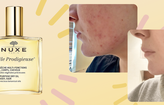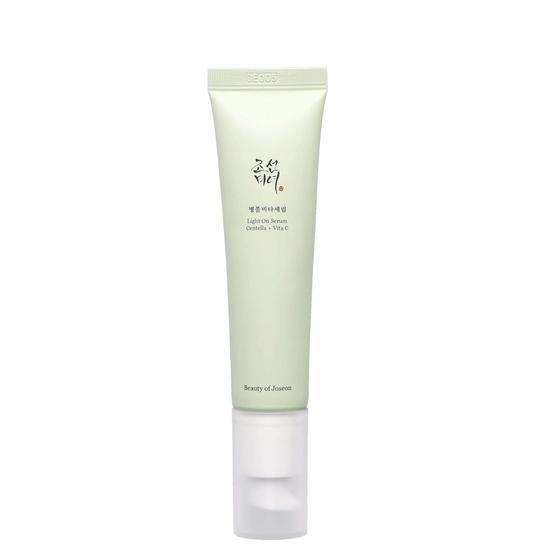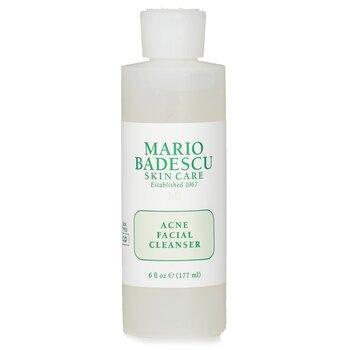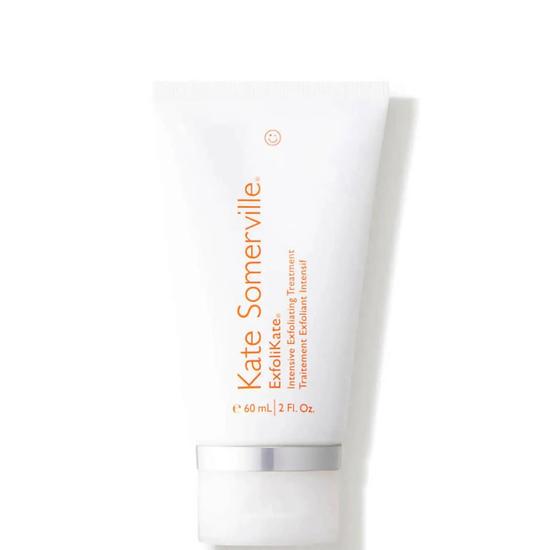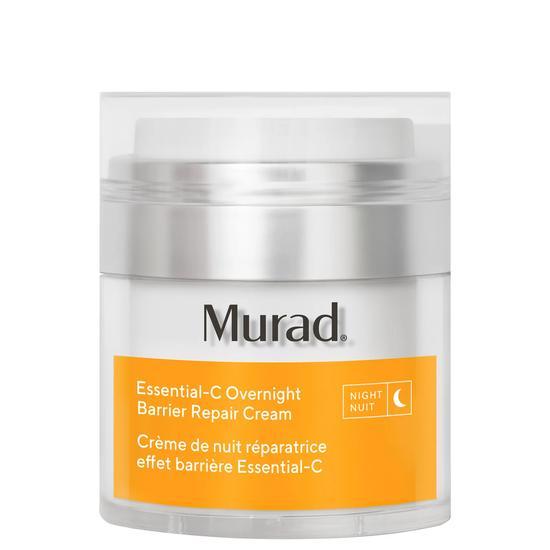
- Skin
- Salicylic Acid With Vitamin C
Can You Use Salicylic Acid With Vitamin C?
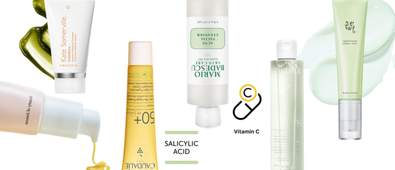
Some skincare ingredients are a tightrope between reaping two great benefits at once, while avoiding the sting, burn or barrier damage that could perhaps come with them. If you're interested in combining the exfoliating benefits of salicylic acid with the brightening effects of vitamin C, this may be a conundrum you find yourself faced with.
This can often hinge on two different factors: how the two are layered and the skin type of the person applying said actives.
Can You Use Salicylic Acid With Vitamin C?
Yes—but layer carefully
You can use salicylic acid and vitamin C in the same routine, but they work best when layered with intention. Salicylic acid clears out pores and reduces oil, while vitamin C brightens and protects. However, both are active ingredients, so combining them might cause dryness in sensitive skin.
A good strategy is to use salicylic acid first, let it absorb, and then apply vitamin C—or use them at different times of the day.
👉 Already know the benefits of each ingredient?
Jump To Routine
What Does Salicylic Acid Do For Skin?
Salicylic acid is a beta-hydroxy acid (BHA) prized for its ability to exfoliate deep inside the pores. Unlike surface exfoliants, it’s oil-soluble, allowing it to penetrate clogged follicles, break down sebum, and reduce acne-causing congestion.
Often found in products for acne-prone or oily skin, salicylic acid also has anti-inflammatory properties, making it effective against blackheads, whiteheads, and mild breakouts. With consistent use, it helps refine texture, clear blemishes, and smooth out rough or bumpy areas.
Key Benefits Of Salicylic Acid Include:
- Deep Pore Exfoliation: As a beta hydroxy acid (BHA), it penetrates oil and unclogs pores, reducing blackheads and congestion.
- Targets Acne: With antibacterial and anti-inflammatory action, it helps reduce breakouts and prevent new ones from forming.
- Improves Texture: Smooths rough, bumpy skin and enhances clarity.
- Oil Control: Regulates sebum production, making it effective for oily and combination skin.
- Reduces Redness: Helps calm active acne flare-ups and inflammation.
- Preps Skin for Actives: Gently exfoliates, allowing deeper penetration of subsequent skincare ingredients.
(Source: Cleveland Clinic, Wikipedia)
Salicylic Acid: Best For Oily, Congested, Or Breakout-Prone Skin
Oily and Acne-Prone Skin: Deeply exfoliates inside pores, helping to clear blackheads, whiteheads and reduce breakouts.
Normal to Combination Skin: Use 2–3 times a week to maintain clear pores and even texture.
Dry or Sensitive Skin: Can be drying or irritating—opt for low concentrations and avoid daily use. Pair with soothing ingredients like panthenol or niacinamide.
What Does Vitamin C Do For Skin?
Vitamin C serves multiple functions in skincare—brightening, protecting, and firming. As an antioxidant, it neutralises free radicals caused by sun exposure, stress, and pollution, helping to prevent premature ageing. It also inhibits excess melanin production, which fades dark spots and evens out skin tone.
In terms of texture, vitamin C promotes collagen synthesis, which improves elasticity and reduces fine lines over time. It also enhances the performance of sunscreen and other protective products when layered properly. For maximum effectiveness, it should be applied to clean skin in the morning, and ideally followed with SPF.
Key Benefits Of Vitamin C Include:
- Brightens Skin: Fades dark spots and hyperpigmentation, boosting radiance and uniformity in skin tone.
- Supports Collagen Synthesis: Promotes firmness and elasticity by stimulating collagen production.
- Protects Against Environmental Damage: Acts as an antioxidant, neutralising free radicals from pollution and UV exposure.
- Evens Skin Tone: Reduces signs of sun damage and post-inflammatory marks for a clearer complexion.
- Enhances SPF Protection: When used in a morning routine, it boosts the protective effects of sunscreen.
- Refines Texture: Improves smoothness and reduces roughness caused by dryness or discolouration.
(Source: Women’s Health, Harvard)
Vitamin C: Suitable For Most Skin Types With Proper Formulation
Normal to Dry Skin: Look for formulas with added hydrators to brighten and support collagen without causing dryness.
Oily and Acne-Prone Skin: Choose lightweight, water-based serums to reduce post-acne marks and boost glow.
Sensitive Skin: Use lower concentrations (e.g. 10%) and stabilised forms like magnesium ascorbyl phosphate to minimise irritation.
Mature Skin: Highly beneficial for collagen stimulation and fading age spots.
When Can Salicylic Acid And Vitamin C Work Well (With Caution) Together?
Salicylic acid and vitamin C can be used together to target acne, dullness, and uneven skin tone—but timing is essential. Salicylic acid exfoliates inside the pores, clearing out congestion and excess oil, while vitamin C brightens the skin and neutralises free radicals.
Using them together in the same routine may cause irritation, especially for sensitive skin, but alternating them (e.g. salicylic at night, vitamin C in the morning) allows each to work effectively without conflict.
This duo is especially effective for acne-prone or textured skin that also struggles with post-inflammatory pigmentation or sun damage. When paired carefully, they refine, clarify, and illuminate.
Comparing Salicylic Acid And Vitamin C Side-By-Side
| Benefit | Salicylic Acid | Vitamin C |
|---|---|---|
| Primary Function | Exfoliates and unclogs pores | Brightens and protects |
| Reduces Fine Lines/Wrinkles | ❌ Minimal effect | ✅ Collagen-boosting |
| Improves Skin Texture | ✅ Smooths surface | ✅ Brightens and smooths |
| Fades Hyperpigmentation | ✅ Fades post-acne marks | ✅ Strong brightening effect |
| Treats Acne & Blemishes | ✅ Excellent for breakouts | ❌ Not acne-focused |
| Enhances Skin Firmness | ❌ No firming benefit | ✅ Boosts firmness |
| Boosts Hydration | ❌ Can be drying | ⚠️ May be drying |
| Improves Skin Barrier | ⚠️ Weakens barrier if overused | ⚠️ May sensitise |
| Potential Irritation | ⚠️ May cause dryness or flaking | ⚠️ Stinging in sensitive skin |
| Suitable for Sensitive Skin | ⚠️ Use carefully | ⚠️ Choose stable formulations |
Vitamin C also works well with
Ferulic Acid – Boosts the stability and efficacy of vitamin C, enhancing antioxidant protection.
Vitamin E – Synergistic antioxidant pairing that helps soothe and protect the skin barrier.
Squalane – Offers lightweight moisture to counteract potential dryness from strong vitamin C serums.
Salicylic acid also works well with
Green Tea Extract – Adds antioxidant protection and reduces inflammation, enhancing acne-fighting benefits.
Aloe Vera – Soothes and hydrates post-exfoliation, reducing potential redness or dryness.
Niacinamide – Calms and balances skin after exfoliation, particularly useful in oily or breakout-prone routines.
How to safely combine salicylic acid and vitamin C
- Use salicylic acid at night and vitamin C in the morning for best results.
- In the morning: cleanse, apply vitamin C serum, wait for absorption, then moisturise and apply SPF.
- At night: cleanse, apply salicylic acid to clean skin (or use a salicylic acid cleanser for a gentler option), follow with salicylic acid (or hydrating) serum and moisturiser.
- Avoid over-exfoliating—limit salicylic acid use to 2–3 times per week.
- Use barrier-supportive ingredients like niacinamide if skin becomes dry.
A.M.
P.M.
FAQs
What time of day is best to use salicylic acid and vitamin C?
Salicylic acid is best used at night to exfoliate; vitamin C works best in the morning to protect and brighten and to work in tandem with a good SPF.
Why not combine them in one routine?
Layering may irritate sensitive skin or compromise product effectiveness due to pH differences. Separate application is safer and still effective.
Best skin types for this duo?
Ideal for oily or acne-prone skin with hyperpigmentation. Salicylic unclogs pores while vitamin C tackles post-acne marks and dullness.
Salicylic acid is just one of many actives which you might see referred to as a chemical exfoliant, alongside other AHAs, BHAs and PHAs. Read up on our guide to The Best Chemical Exfoliators for Soft, Smooth Skin to discover how you can use them to your skin's advantage. Vitamin C, on the other hand, is a great antioxidant and a read through our list of The Best Vitamin C Serums for the Face, will point you in the right direction towards a healthy, glowing complexion.

Written by Maria Mukaranda
Maria’s background is rooted primarily in creative media and a love for all things written, expressed through experience both online and in print; for creative platforms spanning from music to fashion to beauty.
Top Posts

